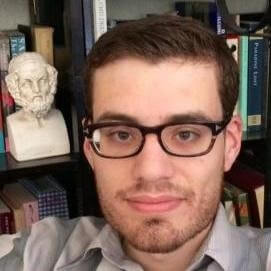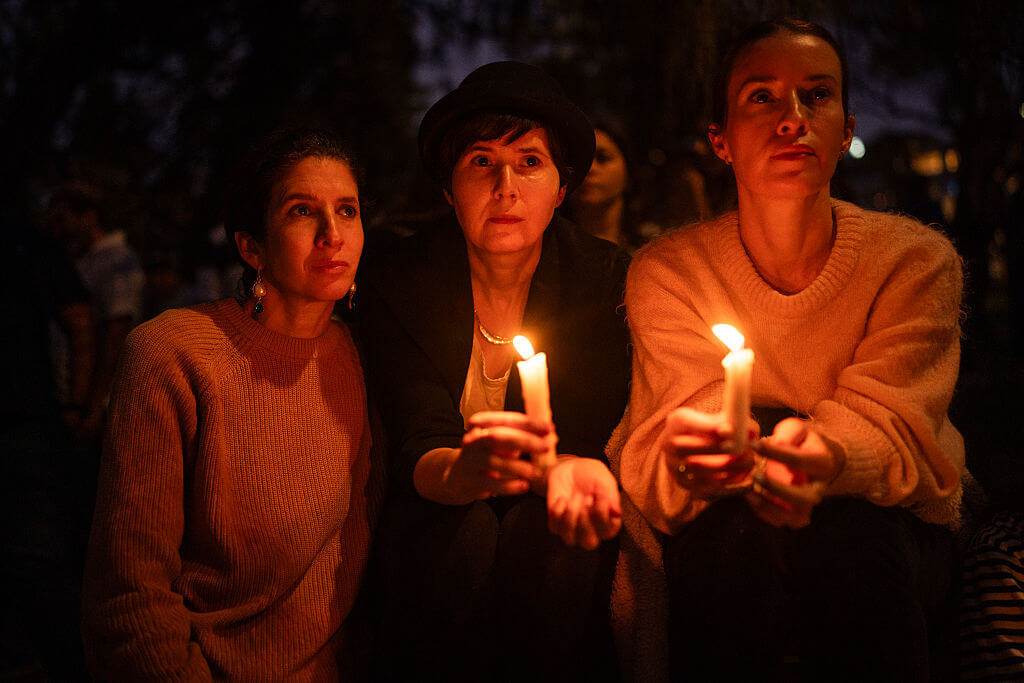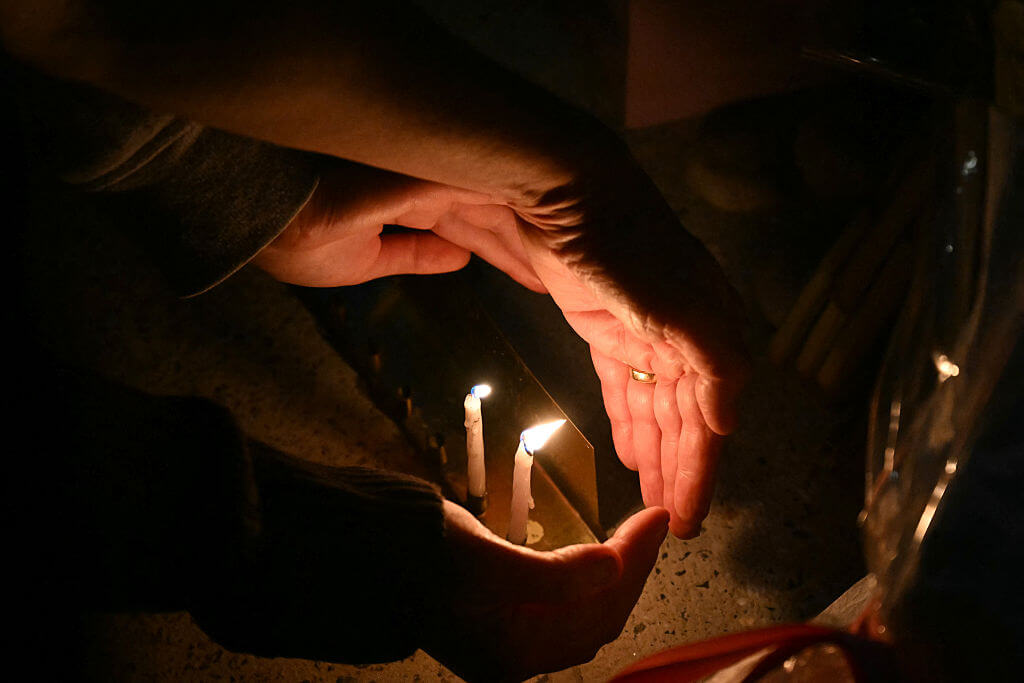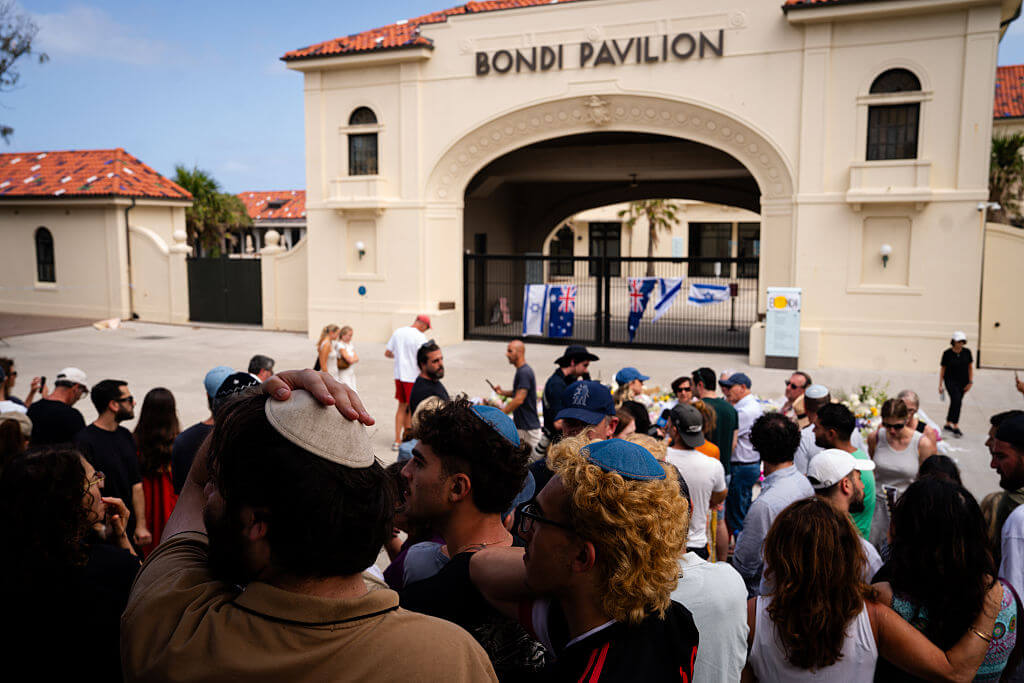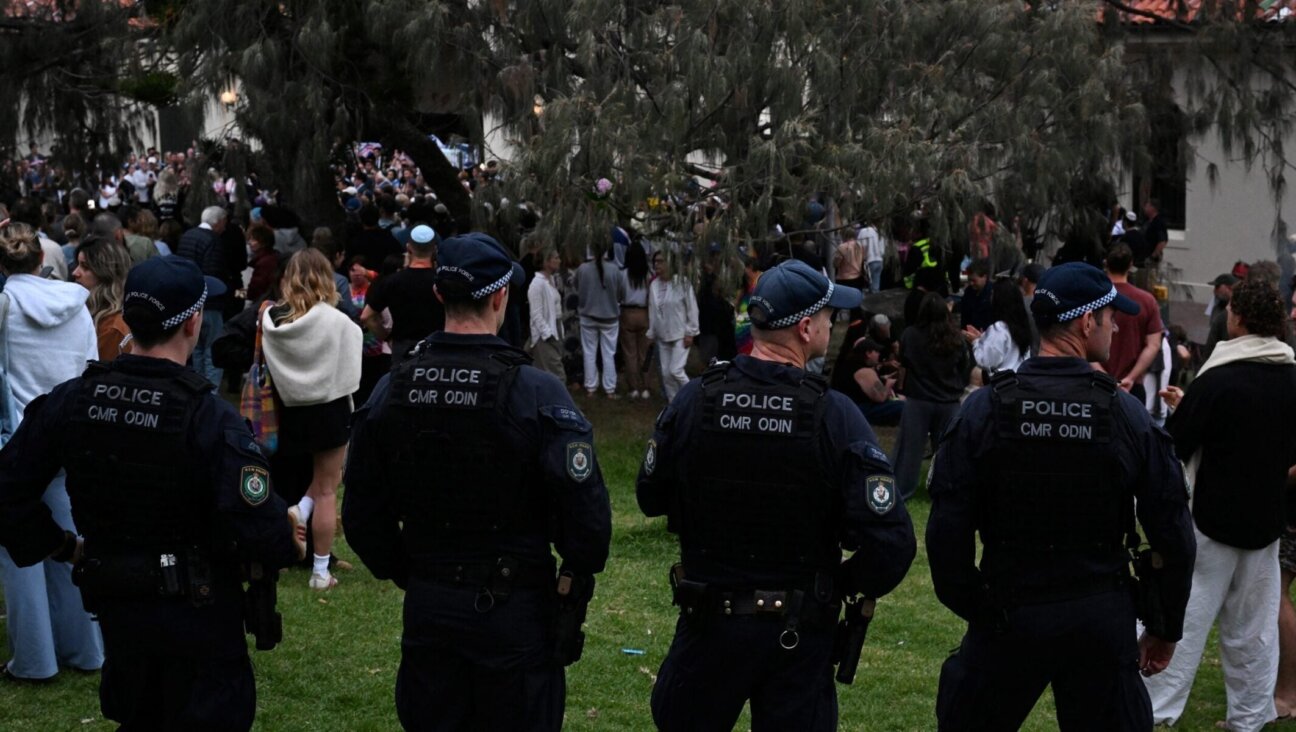What does Mamdani’s response to synagogue protests mean for Jews? No one will like the answer.
The mayor-elect was unsatisfying — but revealed an important truth about Jewish life today

New York City Mayor-elect Zohran Mamdani speaks during a press conference on Nov. 20. Photo by Michael M. Santiago/Getty Images
New York City Mayor-elect Zohran Mamdani’s ambivalent response to last week’s protests against an Israeli immigration event at an Upper East Side synagogue pleased no one. But his words were meaningful precisely because they were so frustrating. They revealed something essential about not just Mamdani’s politics, but about the fabric of New York Jewish life today.
When Park East Synagogue hosted an event with Nefesh B’Nefesh, a nonprofit that facilitates immigration to Israel, last Wednesday, protesters outside chanted slogans like “death to the IDF” and “globalize the intifada.” The event’s attendees said the protest made them feel unsafe. But Mamdani did not respond with either full-throated endorsement or condemnation, as many on both sides of the issue wanted him to. Instead, his spokesperson issued a statement condemning “the language used at last night’s protest,”” and specifically reiterating his belief that “every New Yorker should be free to enter a house of worship without intimidation.”
Yet in the same statement, Mamdani also argued that “sacred spaces should not be used to promote activities in violation of international law.” Specifically, his team said he was referring to the fact that Nefesh B’Nefesh has ties to Israel settlement activity in the West Bank.
Mamdani’s ambivalent response to the protests represent an attempt to knit together two competing imperatives, which are not easily reconciled.
As the mayor of a city with political activists on multiple sides of contentious issues, he wants to protect the right to protest. And he surely shares some of the protesters’ criticisms of Israeli settlement activity. American immigrants to Israel are more likely than other Jewish immigrants to move to West Bank settlements; Mamdani is making the point, in this context, that an event like the one at Park East can carry clear geopolitical implications.
Yet at the same time, Mamdani, who has committed to increasing funding for hate crime prevention by 800% and pledged “to root the scourge of antisemitism out of our city,” knows how problematic it is that protesters used threatening language in front of a house of worship. (On Friday, Mamdani told Rabbi Marc Schneier, son of Park East’s rabbi and a vocal critic of Mamdani’s, that he’d consider a pitch for legislation prohibiting protests outside houses of worship.) His insistence that no one should feel intimidated entering a synagogue is not merely rhetorical, but represents a genuine commitment to religious freedom, to public safety, and to basic respect.
These two impulses — protecting the right to protest, and safeguarding houses of worship — pull in different directions. They do not lend themselves to a tidy, one-line slogan. Yet Mamdani’s ambivalence is not just a political calculation; it is an expression of something deeply Jewish about New York City.
The city’s Jewish community — the largest of any city on earth — is not monolithic. Some New York Jews view Zionism as foundational to their identities, as a spiritual and cultural demand that goes beyond mere politics. Others see Zionism as a fundamentally political ideology, one to be critiqued or resisted, especially when tied to the realities of the occupation of the West Bank.
These are not just academic debates. They mark how Jewish people across the city — and the country — build meaning, pray, mourn and hope.
New York City embodies Jewish pluralism. It is where so many different strains of Jewish identity cross paths: Orthodox, Reform, secular; Zionist and anti-Zionist; immigrant Jews, native-born Jews. And it is also a city where immigrants from all around the world live together in relative peace, where countless religions worship together, where just about any kind of food on earth can be sampled.
With his nuanced response, Mamdani is showing that he is trying to represent that city. He is not offering reassurance to one side by abandoning the other; instead, he is straining to hold multiple truths at once.
Navigating a city of such profound pluralism is necessarily messy. And for many people, that very messiness will be unsatisfying. To critics, Mamdani’s statements may feel evasive, insufficient or morally suspect. Some argue he should never have questioned the legitimacy of a Jewish gathering about making aliyah. Others contend he should never have condemned the slogan “globalize the intifada” in the first place.
But sometimes, leadership over this diverse metropolis means recognizing that people will feel uncomforable, and still forging a space where dissent and belonging have to coexist, even if uneasily.
Mamdani must be pressed to clarify what concrete steps he will take to ensure that places of worship are protected from intimidation. His words to Schneier, and the apology that police commissioner Jessica Tisch — who will retain her role under Mamdani — offered to the synagogue are steps in the right direction.
And Mamdani must engage more deeply with Jewish communities who feel their identity and safety were undermined by this incident. Theirs are legitimate and necessary demands.
But if we reduce this episode to a clear binary, in which Mamdani is seen as either supporting the protesters or the Jewish community , we erase a crucial reality. Part of what makes political life in New York City, and Jewish life in New York City, so vibrant is that both are too complex to allow for neat explanations.
And at a time when the reigning political culture wants to force people into simple black-and-white boxes, we need to make more space for that ambivalence.
Because in the end, Mamdani’s response is not a statement of political convenience. It is a mirror of the divisions and tensions that exist within ourselves and our communities. It reflects back to us a city where protest and prayer, dissent and belonging, identity and ideology coexist.
That tension may be painful. But while the struggle to speak honestly across differences may be messy, it is also indispensable.
If we want leaders who represent all of us, we might have to live with their ambivalence, and, in so doing, accept that our community is stronger when its contradictions are acknowledged and not erased.
